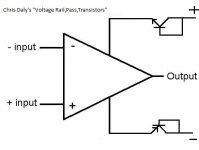Apologies, it's mainly odd order, my memory is failing https://www.cresttech.com.au/pdf/Silonex/levelcontrol.pdf
Review: Tortuga Audio LDR3 - LDR "passive preamp" – Neurochrome
Review: Tortuga Audio LDR3 - LDR "passive preamp" – Neurochrome
My impression is that they generate quite a bit of second harmonic distortion. With simple music this can be pleasant, with more complex music, not so much.
Where does this impression of yours come from?
Okay I typed while your message came in.
You basically have no impression.
The LDR data sheets show third harmonic distortion. The tests from Tortuga showed third harmonic.
In comparative listens between my LDR control and stepped attenuator I could hear a difference, and it was constant with all music.
Last edited:
You basically have no impression.
If you say so
I'm not offended. I don't need to listen to one to know that it produces distortion and the effect of the distortion. Perhaps I've posted similar to others because they know too, I don't know as I said I haven't read the thread, probably there is nothing left to add to the discussion, this seems most likely. I merely responded to the most recent posts and read your first post. I made an error initially and apologised for that.
Since you haven't read the thread you are likely not aware that I am the OP and I have taken a large interest in the thread through it's 5 years of existence. It's always nice to have new information added, which is helpful to all interested parties.
I tend to think that one has to listen to something to know how it sounds. I think it works best that way.
I tend to think that one has to listen to something to know how it sounds. I think it works best that way.
Last edited:
I'm not offended. I don't need to listen to one to know that it produces distortion and the effect of the distortion.
Really ?
The distortion products, if any, originate not from the device itself, rather originate from the chosen power supply, used to power the anode and cathode of the internal LED.
We would succumb to discuss a hypothetical power supply, that let me guess ...you don't want to discuss.
The said power supply to begin with needs entirely fresh ways of looking at power rectification, as conventional rectifiers are not up to the task.
The distortion products, if any, originate not from the device itself, rather originate from the chosen power supply, used to power the anode and cathode of the internal LED.
No way we go back to this silly discussion. The harmonic distortion of LDRs is well known, and it has been measured.
This discussion is done (in this thread an elsewhere). Get over it.
Its not a silly discussion at all, LDR's are not only sensitive on their cell side being able to change resistance on their cell, with infinitesimal small current value, but even more so on their anode and cathode supplying said current.
There is in my experience, proven time after time, direct relationship between what occurs supplying current to what then is established as resistance, and what is heard in a typical L pad audio circuit.
The basic recipe for the internal led anode and cathode circuitry to elicit such results, is unique combinations of DC parallel circuits, and observation of both triac and thyristor circuitry, particularly thyristors. You can read hundreds of pages of thyristor manual, but they fail describe the operation I have found.
There is in my experience, proven time after time, direct relationship between what occurs supplying current to what then is established as resistance, and what is heard in a typical L pad audio circuit.
The basic recipe for the internal led anode and cathode circuitry to elicit such results, is unique combinations of DC parallel circuits, and observation of both triac and thyristor circuitry, particularly thyristors. You can read hundreds of pages of thyristor manual, but they fail describe the operation I have found.
Last edited:
That isn't helpful Chris,
That sentence doesn't explain how it works.
stay safe
tim
Just like he couldn't explain this one of his either.
Cheers George
Attachments
- Home
- Source & Line
- Analog Line Level
- LDR Attenuator Impressions
